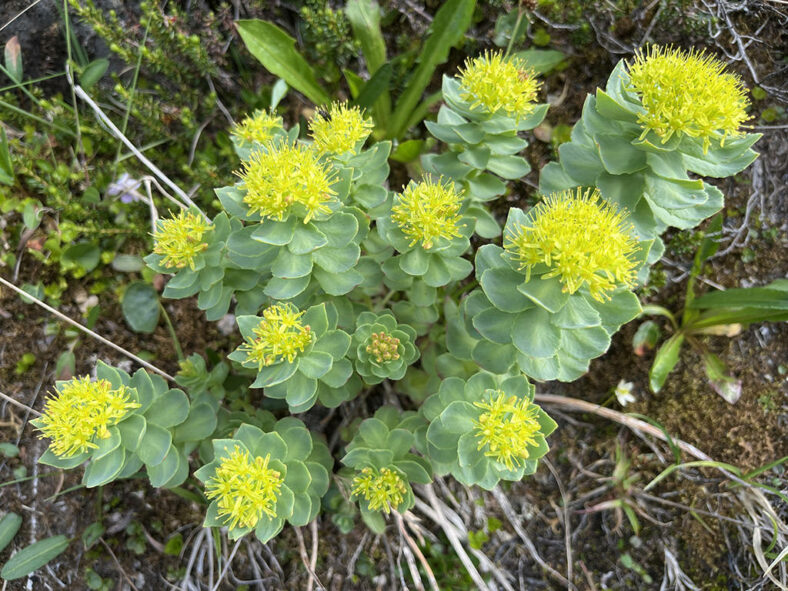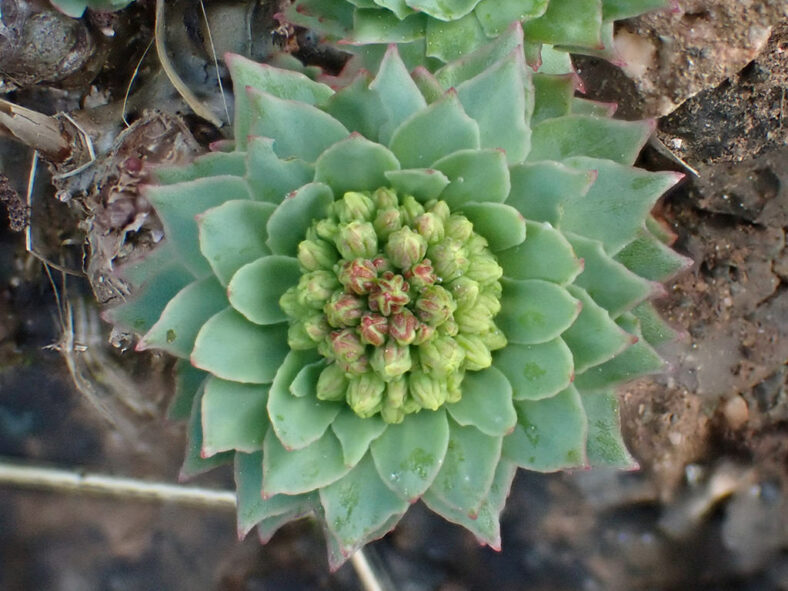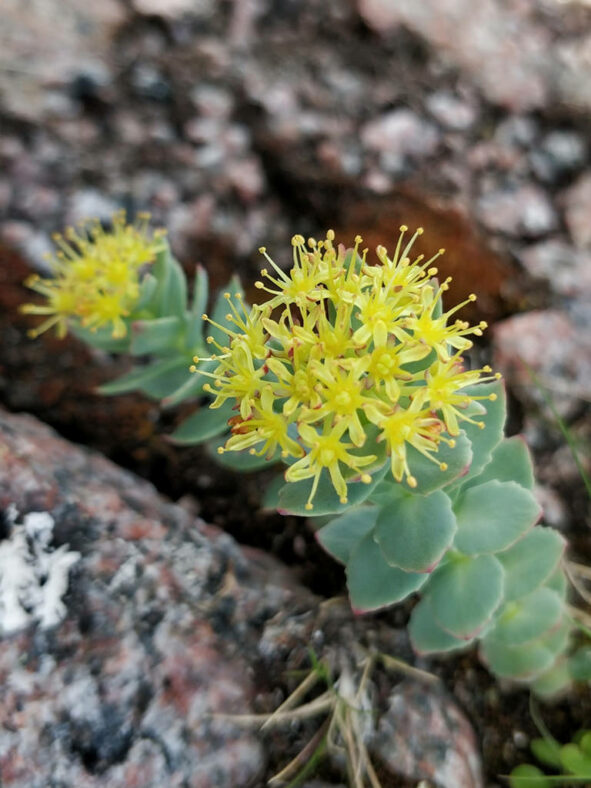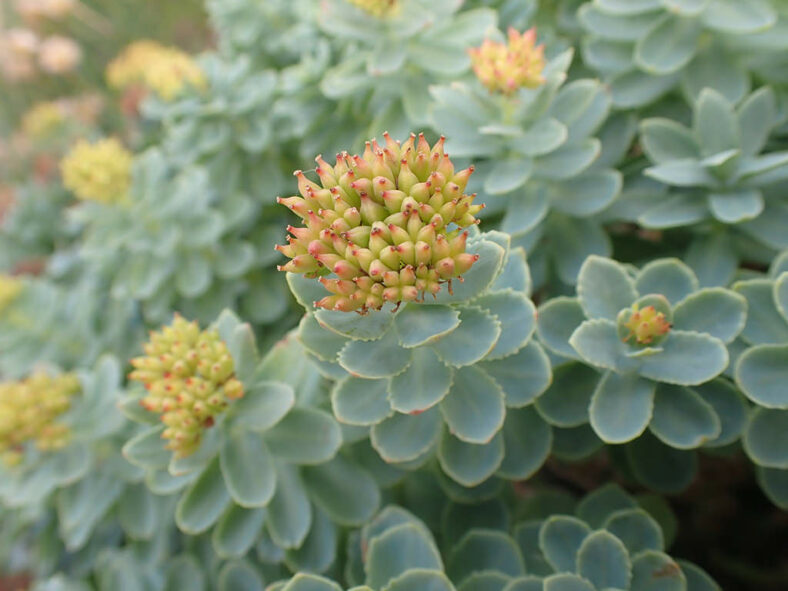Rhodiola rosea has been used for centuries in traditional medicine. The young shoots and leaves have a slightly bitter taste and can be eaten raw or cooked like spinach. They are often added to salads.
Scientific Name
Rhodiola rosea L.
Common Name(s)
Aaron's Rod, Arctic Root, Golden Root, King's Crown, Orpin Rose, Roseroot, Rosewort
Synonym(s)
Sedum rhodiola, Sedum rosea
Scientific Classification
Family: Crassulaceae
Subfamily: Sempervivoideae
Tribe: Umbiliceae
Genus: Rhodiola
Etymology
The specific epithet "rosea (RO-zee-uh)" means "pink, rose-colored, rosy" and refers to the rose-like fragrance of the fresh-cut rootstock.
Origin
The native range of Rhodiola rosea includes northern, central, and southern Europe (westwards to the Pyrenees, southwards to southern Bulgaria), Russia (Ural, Siberia, Sakhalin, Kuriles), Mongolia, northern China, Korea, Japan, and North America (northern United States, Canada, and Greenland). It grows in crevices of mountain rocks and on sea cliffs.
Description
Rhodiola rosea is a succulent plant with flowering stems that grow from the top of a thick, scaly caudex. The caudex is erect or spreading and can reach up to 1 inch (2.5 cm) in diameter. The flowering stems are annual and can grow up to 16 inches (40 cm) tall and 0.25 inches (0.6 cm) in diameter. They are smooth, pale green, and sometimes glaucous. The leaves are pale green, usually glaucous, and often have reddish tips. They are ovate to obovate or oblong and can measure up to 2 inches (5 cm) long and 0.6 inches (1.5 cm) wide. The margins of the leaves are nearly entire to irregularly and sparsely toothed.
This plant is dioecious, meaning it has male and female flowers on separate specimens. The flowers are usually 4-merous, with pale yellow to greenish-yellow petals, sometimes red at the tips. They appear in dense, many-flowered terminal clusters in summer. The flower clusters can reach up to 2.6 inches (6.5 cm) in diameter and have 25 to 70 flowers. The fruits are lance-shaped follicles that measure up to 0.3 inches (0.8 cm) in length.

How to Grow and Care for Rhodiola rosea
Light: Sufficient light is most important to growing a healthy plant. Rhodiola rosea grows best in locations where it will enjoy the full sun for at least six hours daily but will tolerate some shade. Place the plant near a sunny window or use artificial lights when growing indoors.
Soil: This plant does not like to sit in waterlogged soil, so drainage is essential to prevent root rot. Use a commercially available mix for succulents, or create your own.
Temperature: Rhodiola rosea has a good tolerance to heat and low temperatures. It grows best in USDA Plant Hardiness Zones 2a to 7b, with average minimum winter temperatures ranging from -50 to 10 °F (-45.6 to -12.2 °C).
Watering: From spring through fall, water thoroughly and wait for the soil to dry out before watering again. During the winter, water the plant just enough to keep it from shriveling. When watering, avoid wetting the leaves, stems, and flowers.
Fertilizing: Feed a water-soluble fertilizer diluted to half the recommended strength during the growing season. However, feeding is unnecessary if you provide the plant with fresh soil annually.
Repotting: When Rhodiola rosea outgrows its current pot, repot it into a larger one during the spring. Make sure the soil is dry before you begin repotting.
Propagation: Rhodiola rosea by root division during the growing season or by sowing seeds in spring or summer.
Learn more at How to Grow and Care for Sedum.
Toxicity of Rhodiola rosea
Rhodiola rosea is not listed as toxic for people but can be mildly toxic to pets and children.
Links
- Back to genus Rhodiola
- Succupedia: Browse succulents by Scientific Name, Common Name, Genus, Family, USDA Hardiness Zone, Origin, or cacti by Genus
Photo Gallery
Click on a photo to see a larger version.


